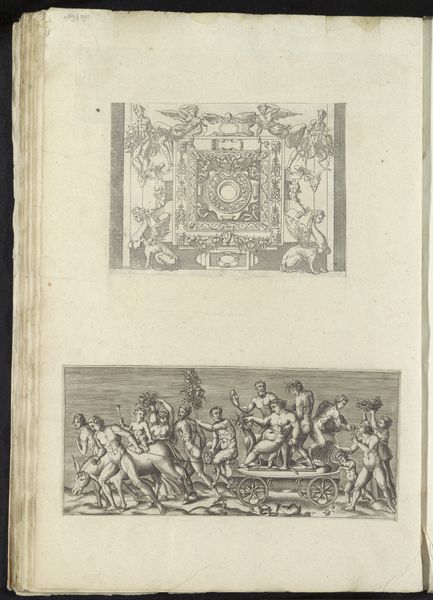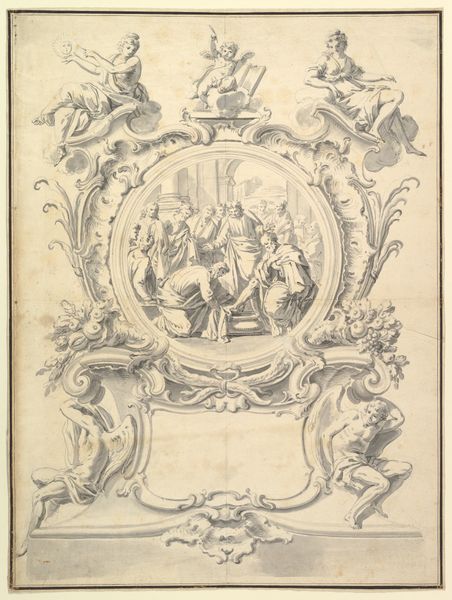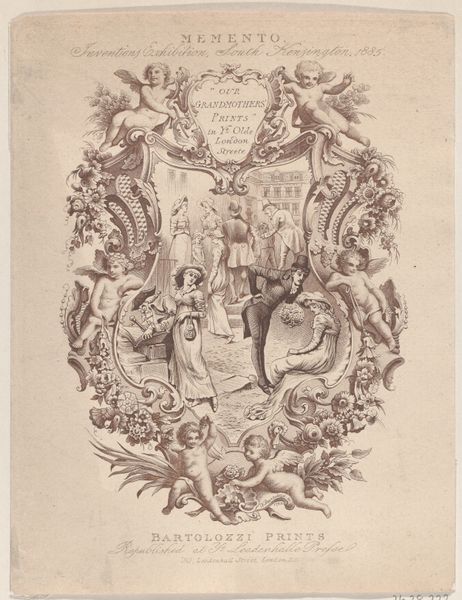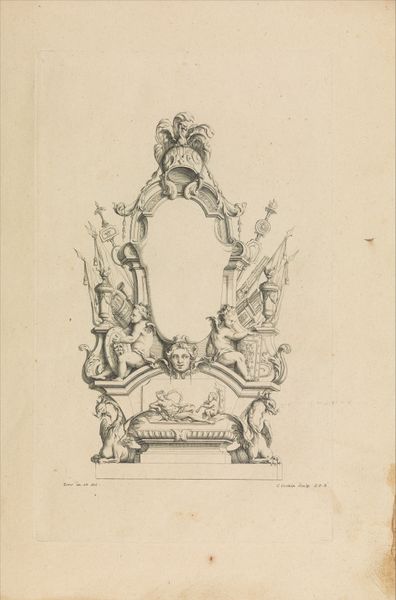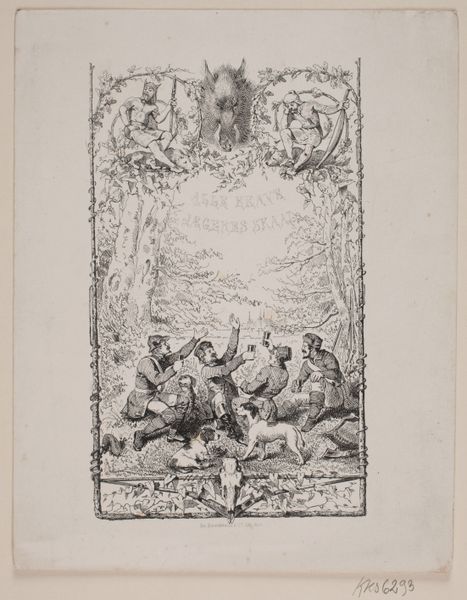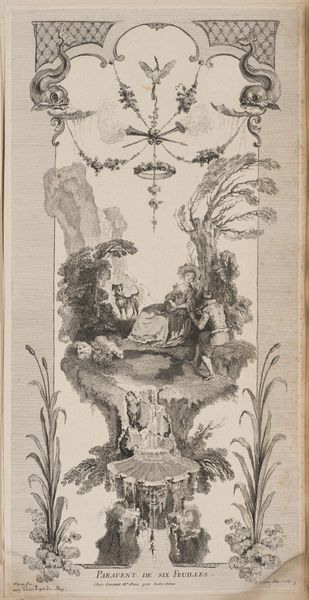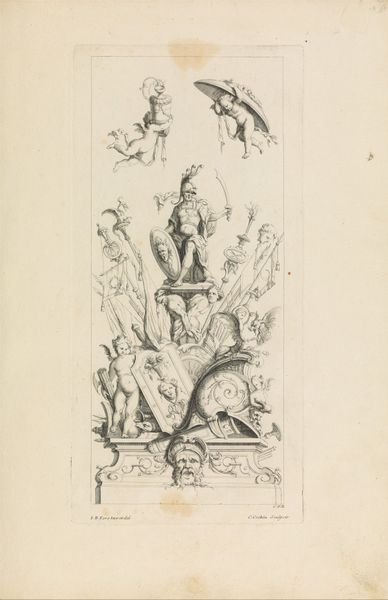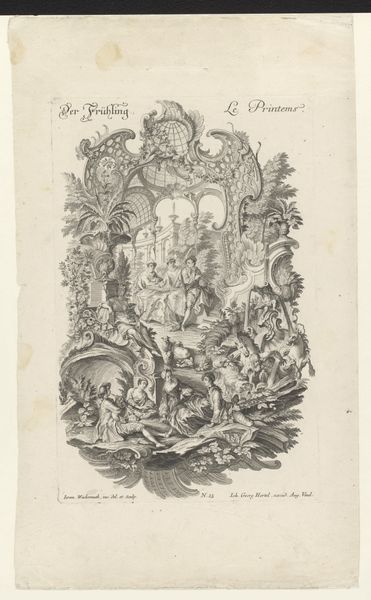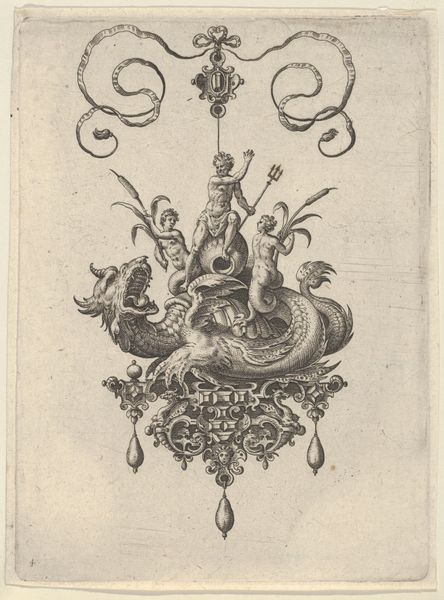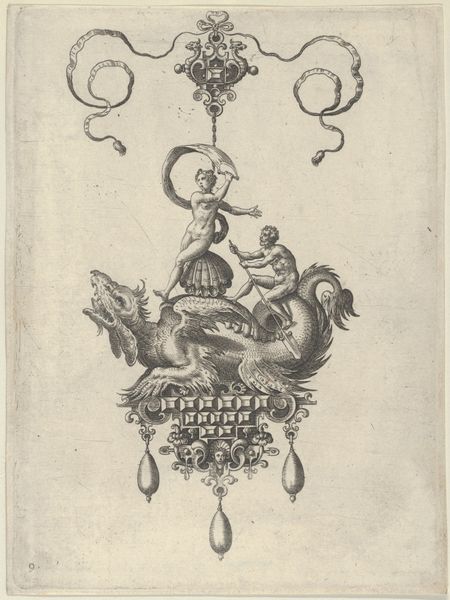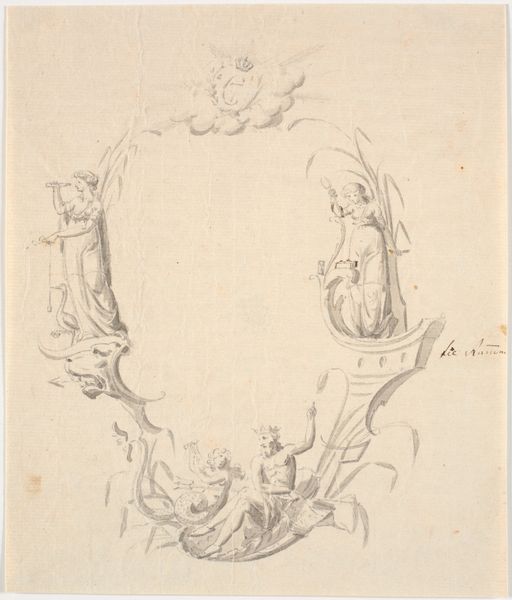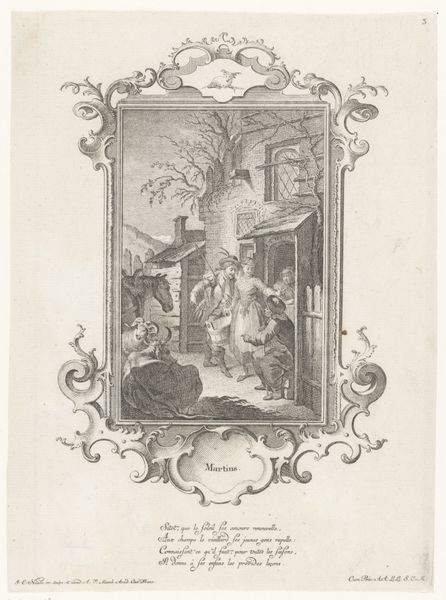
Design for a Frontispiece with an Allegory of Brazil 1686 - 1735
0:00
0:00
drawing, print, ink, pencil, engraving
#
drawing
#
allegory
#
baroque
# print
#
figuration
#
ink
#
pencil
#
history-painting
#
engraving
Dimensions: sheet: 10 5/8 x 8 in. (27 x 20.3 cm)
Copyright: Public Domain
Editor: This drawing, "Design for a Frontispiece with an Allegory of Brazil," dating from 1686 to 1735, by Ottmar Elliger the Younger, uses pencil, ink, and engraving. The allegorical figures feel… staged, almost like a political performance. What do you make of this seemingly symbolic representation? Curator: Indeed. What strikes me is the blatant staging of colonial power. Look at how Brazil is presented, as a seated Indigenous figure, almost like a trophy alongside classical gods and European symbols. This isn't just art; it’s propaganda, reinforcing the supposed right of European powers to exploit and control Brazil. How does seeing it this way impact your perception? Editor: I see your point. The Indigenous figure is… passive, subservient even, in comparison to the more active European figures. I guess I was initially drawn in by the detail, but now I see the power dynamics at play. Does the fact that it’s a "design for a frontispiece" suggest its intended purpose? Curator: Absolutely. A frontispiece is the opening image of a book, setting the tone and shaping the reader's interpretation. In this case, it's framing Brazil as something to be possessed and controlled by Europe. Think about who would be commissioning and viewing such an image at the time, what narratives it serves and whose voices are silenced. Editor: So, the art isn't just reflecting history, it's actively shaping it by perpetuating colonial ideologies. This image becomes less about artistic skill and more about the politics of representation. Curator: Precisely! It becomes a document, however biased, of the socio-political landscape and the public role of art in reinforcing dominant narratives. By analyzing art through its historical context, we understand not just its aesthetic qualities, but also its political functions. Editor: I'll definitely look at Baroque art differently now. I'll pay closer attention to the narratives they construct and the power structures they reflect, instead of getting caught up in details. Thanks. Curator: Likewise! It is by continually revisiting history and context that we begin to really unpack artworks like these, and appreciate them on an entirely different level.
Comments
No comments
Be the first to comment and join the conversation on the ultimate creative platform.

